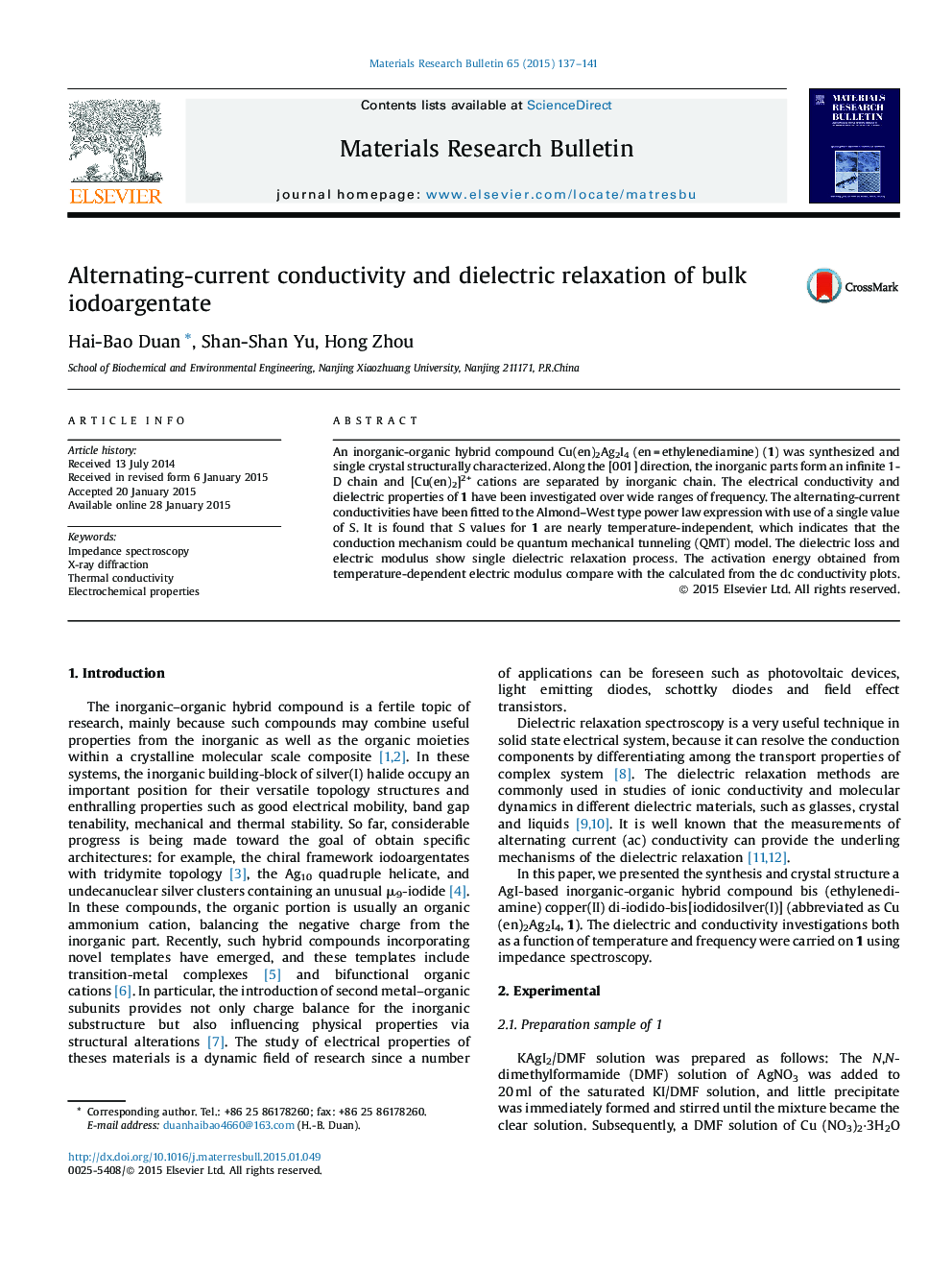| Article ID | Journal | Published Year | Pages | File Type |
|---|---|---|---|---|
| 1487682 | Materials Research Bulletin | 2015 | 5 Pages |
•The conduction mechanism is described by quantum mechanical tunneling model.•The applications of dielectric modulus give a simple method for evaluating the activation energy of the dielectric relaxation.•The [Ag2I4]2−1-D chain and [Cu(en)2]2+ cation column form the layered stacks by hydrogen bond interactions.
An inorganic-organic hybrid compound Cu(en)2Ag2I4 (en = ethylenediamine) (1) was synthesized and single crystal structurally characterized. Along the [001] direction, the inorganic parts form an infinite 1-D chain and [Cu(en)2]2+ cations are separated by inorganic chain. The electrical conductivity and dielectric properties of 1 have been investigated over wide ranges of frequency. The alternating-current conductivities have been fitted to the Almond–West type power law expression with use of a single value of S. It is found that S values for 1 are nearly temperature-independent, which indicates that the conduction mechanism could be quantum mechanical tunneling (QMT) model. The dielectric loss and electric modulus show single dielectric relaxation process. The activation energy obtained from temperature-dependent electric modulus compare with the calculated from the dc conductivity plots.
Graphical abstractThe electric modulus shows single dielectric relaxation process in the measured frequency range.Figure optionsDownload full-size imageDownload as PowerPoint slide
